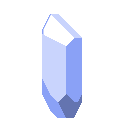Architecture primer¶
This is an overview of how the various objects in Prism fit together to form a game.
Actors¶
Actors are the entities that populate the game world. They include the player, monsters, items, chests, and any other interactive elements. Each actor consists of components—data structures that define their state and behavior.
Components¶
Components store the data that define an actor or cell’s properties and abilities. A monster’s health, a poison effect, or a cell’s opacity are all represented as components. Components determine what actions an actor can perform.
Actions¶
Actions are how actors interact with the game world. Moving, attacking, and casting spells are all actions. Actions require actors to have specific components and perform state changes within the level. Arguments to an action are defined by its targets.
Targets¶
Targets define the arguments for an action by validating objects. A “move” action might require a position within a range of 1 from the performing actor, or a “zap” action might require an item with certain components along with a position or an actor.
Systems¶
Systems handle game logic based on events. They process changes, such as reducing an actor’s health due to poison at the end of their turn or checking if a floating creature should fall into a pit. Systems operate at the level-wide scale being fed all events from that level.
Messages & Decisions¶
Messages are how communication flows to and from the level. These might include requests to open the debugger, or to play a sound or animation. Input from the player is requested through decisions, a child class of messages. Game states and systems are able to respond to messages.
Level¶
The level manages all actors and maintains the game state. It tracks turns, processes actions, moves actors, and holds the map and various caches for the game world.
Cells¶
Cells define the physical structure of the level. They represent terrain elements such as walls, floors, water, and lava—determining where actors can move and interact.
